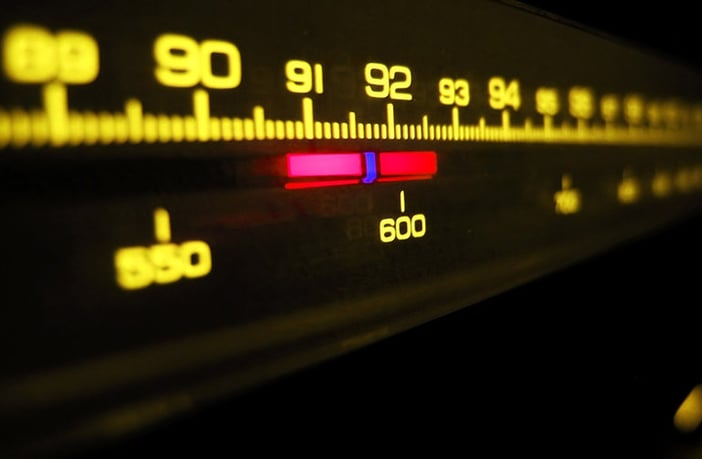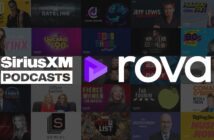At the beginning of the year, the radio industry announced that the regular T1 survey would not be conducted on account of a need to review the dated diary survey, which has until now been used.
“In December, MediaWorks and the independent radio stations took the lead in improving the radio industry’s audience measurement system,” says MediaWorks group head of comms Rachel Lorimer.
From the outset, NZME Radio wasn’t supportive of the decision to cancel the survey scheduled for the first half of the year.
However, it now seems that after several weeks of contemplation, NZME has taken matters into its own hands and earlier today announced it will fully fund an independent survey of radio audiences in Auckland, Wellington and Christchurch.

NZME Radio managing director Dean Buchanan says this move was made to give advertisers access to objective up-to-date data to ensure that their spend in the channel is justified.
“We have engaged TNS, the company that has conducted the industry’s independent surveys for more than 20 years, to ensure impartiality,” says Buchanan.
The contract with TNS expired at the end of last year, and the radio industry took this as an opportunity to rethink the way in which survey numbers were gathered and reported.
As pointed out in an earlier StopPress article, in an era where the online realm has allowed marketers and media owners to measure, track and chart everything in real-time, it seems slightly anachronistic to record radio listenership by getting people to fill in a paper diary.
Buchanan says that innovation was necessary, and this means that the new system will give participants a choice as to how they would prefer to complete the survey.
“For the first time in New Zealand, TNS will introduce a mixed methodology survey including an on-line sample with e-dairies,” says Buchanan.
Buchanan explains that this online variation of the diary survey will be integral in gathering information from listeners under the age of 25, in that they have shown little interest in the traditional approach.
“Asking them to fill out a paper diary is like asking them to ride a tricycle to the cinema to watch 50 Shades of Grey,” he says.

NZME commercial director Sandra King says that the move was made to ensure that clients are furnished with sufficient data to make informed decisions when it comes to radio placements.
“Clients have told us they want more data, not less data,” says King.
The drive for more accurate metrics is not only evident in the radio industry. As online technology provides more and more sophisticated means by which to track the effectiveness of campaigns, there’s a growing expectation that the other mediums should also be able to accurately gauge the effectiveness of their channels.
This has previously seen iSite Media investing large sums to develop its ‘Highly Targeted Outdoor’ platform that allows for more accurate tracking of bus-based advertising.
When viewed alongside sophisticated approaches like these, it comes as little surprise that the radio industry decided after the previous survey, conducted in October last year, that it was time to update the service.
The decision by NZME has caught MediaWorks slightly off-guard, given that the pair of networks reached an accord not to run the survey earlier this year. And rather unsurprisingly, MediaWorks has distanced itself from the NZME-financed survey, comparing it to nothing more than “a piece of research”.
“The ‘survey’ announced today is a piece of research commissioned by NZME and does not involve the wider radio industry,” says Lorimer. “As such it will have limited value to advertisers. The focus of MediaWorks and the independent radio stations remains working collaboratively with the radio industry to develop an objective audience measurement system that best serves our clients.”
The step by NZME to finance the survey independently of MediaWorks is unusual, and could lead to concerns over the objectivity of the results published. However, Buchanan dismisses such concerns, saying that the study will be carried out independently.
“NZME will be asking them to research across the whole industry, and they will come back and deliver a bipartisan report in May,” says Buchanan. “This survey covers the exact same stations that TNS has traditionally surveyed for the past 20 years with the added innovation of online e-diaries.”
Jason Shoebridge, the managing director of TNS, backed these sentiments, saying: “Although NZME are fully funding the survey, TNS New Zealand will continue to perform the study to the same world best quality standards and level of independence it has operated the radio survey to over the last 20 years.”
However, Lorimer pointed out that Radio Broadcasters Association, which includes both NZME and MediaWorks, “agreed as an industry” that there would no survey in the first half of 2015 and said that NZME was “acting in isolation.”
(UPDATE: there has been some discrepancy regarding the accuracy of the word ‘agreed’, so StopPress contacted Radio Broadcasters Association [RBA] chief executive Bill Francis, but he said that he could not comment publicly on discussions that were exclusive to the RBA board.)
King disagrees: “We are not operating in isolation. We have spoken at length to key advertising agencies and clients who have provided us with strong feedback regarding how heavily they rely on the radio survey data. So the results of this survey will be fundamental to their spending decisions as it is more up to date than what they currently have.”
In this regard, Lorimer turns back to the previous agreement, and points out that the industry previously came to an accord as a whole.
“International experts Peter Don and David Kidd have consulted with MediaWorks, NZME, Radio NZ, the independent radio stations, and The Radio Broadcasters Association, and recently delivered an outstanding report,” says Lorimer. “It will be presented to the radio industry shortly, and recommends audience measurement for 40 weeks of the year with nationwide reach and more accurate capture of information.”
Buchanan says that he was not consulted and is unaware of any report that is set to be released.
Francis said that decision to run the survey was made independently by NZME, and said that he was not in a position to comment on it.
“The RBA will continue to work with the industry to find the most robust methodologies to ensure the industry remains strong in the future,” he says.
Given that the cross-network rivalry has already delivered some great tit-for-tat banter, it will be interesting to see what emerges when the results are released in May.




